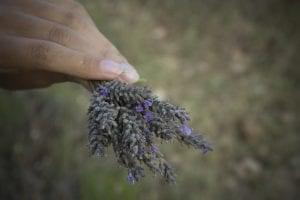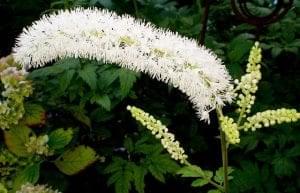Medieval Herbalism: Introduction to European Practices and Salves, Expanded Notes
European herbalism in the middle ages, roughly 1300 AD to 1600 AD, encompassed a diverse set of folk beliefs, regional recipes, and practices. Social stratification, particularly in the late middle ages when trade offered the wealthy access to imported spices through well-established and growing trade routes, created a divide between the classes, offering newer but not necessarily better medicinals to those who could afford them. Diversity of climate offered a wide range of regional practices developed from the properties of local plants in accompaniment with region-specific cultural beliefs and requirements. While folk across Europe faced some similar challenges, those of one region, such as the harsh maritime climates of modern Scotland, faced a set of very different challenges and requiring a different set of medicines from those living in other regions, such as the warm, interior climate of Northern Italy. Factors guiding herbal practice in the middle ages included:
- Climate
- Economic Status
- Local Culture
- Access to Imported Herbs and Spices
Imports offered herbalists of the middle ages access to new and different modalities for treating illness, caring for the home, and maintaining health on the battlefield. Importers chose mainly potent, fast-acting herbs, which were then available at a relatively high cost to primarily the wealthier classes. The result was the beginning of a shift toward a less bland, spicier diet realized most powerfully during the Renaissance and Industrial ages, and toward fast-acting medicines. Imported spices, such as citrus and ginger, were used as substitutes to traditional European herbs such as rose hips and sage. Plants and preparations from Native Americans such as echinacea and goldenseal, were introduced to European culture at this time as well.
Our focus for today is on household European herbals that were likely available across most regions. These are herbs that grow easily and heartily in most of Europe’s varied climates, making them accessible to all levels of society. Herbs we’ll encounter today include:
- Elderberry–Antiviral, anti-inflammatory, diuretic, astringent, alterative.
- Rosehips–Anti-inflammatory, nutritive, diuretic, laxative.
- Sage–Stimulate, antibacterial, tonic, diuretic.
- Plantain–Refrigerant, diuretic, deobstruent, astringent.
- Calendula–Stimulate, diaphoretic, anti-inflammatory.
- Comfrey–Demulcent, mild astringent, expectorant, anti-inflammatory.
- Yarrow–Antiseptic, antibacterial, hypotensive, hypoglycemic, astringent, anti-inflammatory, anti-fungal, emmenagogue, tonic, bitter.
- Nettle–Diuretic, astringent, anti-inflammatory, nutritive, alterative, tonic
- Apple–Astringent, nutritive, digestive.
Methods of using herbs in the middle ages varied and for a goodly part are much the same as we use them today. We still use methods such as teas or infusions, salves and ointments, direct applications through poultices, and extractions such as tinctures and glycerites. Strewing herbs and purgatives have fallen by the wayside as our homes have become more insulated and better constructed, making greater room for potpourris and incense.
Although we use similar preparations today, the technology we use as well as the strength and potency of our herbal medicines is most decidedly different. Modern methods for creating some herbal preparations, such as herbal oils, remain much as they were in the middle ages. Other methods, such as that for salve-making, have changed with the invention of technologies such as electricity and the modern microwave.
The potency of basic ingredients between now and then is palpably different. Most of the herbs gathered and used in the middle ages were wild-grown rather than cultivated as are those we use today. Those that were cultivated were selected for a concentration of their beneficial properties. Cultivation over the past fifty years or more has been focused on quantity rather than quality, making modern herbs less potent and often considerably larger than their medieval counterparts. A medieval medic or housewife would have used considerably less elderberry, for instance, to treat a fever than we must use today. Wild herbs even today taste stronger and pack a lot more medicinal and nutritional properties into each cell than do our cultivated varieties. In making herbal preparations, such as the salve we’re making today, we can approximate medieval results by increasing the amount of herb we use and by using wild-crafted or organically-grown ingredients.
If you choose to wild-craft, be aware that herbalists in America have established a basic set of wild-crafting rules based in part on ethical harvest practices and in part on the laws governing our wild spaces. For more information on wild-crafting, see Henriette’s Herbal page on Wild-crafting.
Housewives would have made salves once or twice a year that they stored in corked glass or pottery containers. Medics would have carried small amounts of salves or ointments with them, most likely not wishing to take the time amidst battle to make more. A salve is an herbal oil into which has been incorporated enough beeswax to give it stiffness. The most common oils used in making herbal oils of the middle ages included olive oil and lard. Today’s commercial salves, such as Tiger Balm, are often made with paraffin, which was not available in the middle ages, and essential oils, which were not used by common folk of the middle ages for the most part due to their association with heretical practices. The late middle ages and early renaissance saw an increase in the use of essential oils both in treating illness and for daily use. Salves employed by common householders would most likely not have included any essential oils while those carried by medics may have.
One of the greatest shifts herbalism of the late middle ages saw as the shift toward fast-acting, big-effect medicines. Imports such as ginger, cayenne, and cinnamon, as well as herbs like opium and marijuana that are outlawed in modern America contributed to this shift. Scientific advances made by alchemists in accompaniment with this demand gave birth to the modern allopathic medicine we use today.






